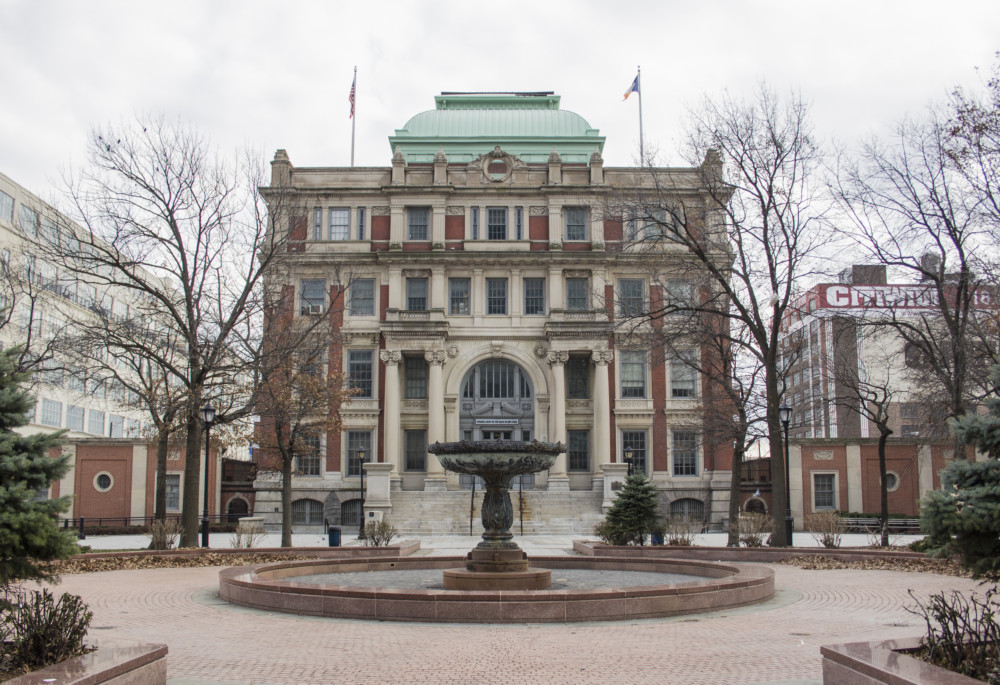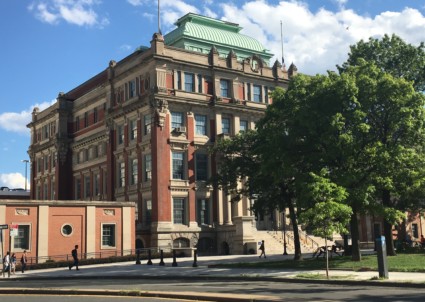New York State Supreme Court Building
25-10 Court Square
Peter M. Coco
1904-1908
In the late 19th century, the county seat was relocated to Long Island City, which was emblematic of the area's increasing importance as an independent municipality that boasted its own public school system, regular police force and pure water supply. The new county seat was located in a two-story, French Second Empire building on Court Square, a prominent place in the growing city. Unfortunately, the structure was gutted by a fire in 1904, so a new building was commissioned from architect Peter Coco. A graduate of Cooper Union, Coco designed the building in the neo-English Renaissance style, incorporating many interesting details, such as the pairs of eagles set above cartouches around the third story. When the boroughs were consolidated in 1898, Long Island City lost its status as the county seat to Jamaica, yet the courthouse remained in use as the county courthouse until being taken over for use by the state's Supreme Court in 1932. This dignified four-story building has remained a focal point for judicial activity in Queens for over a century, serving as the site of many notable trials, including that of Ruth Brown Snyder and Henry Judd Gray, who were famously executed at Sing Sing Prison in 1928 after being convicted in the murder of Snyder's husband, Albert Snyder. The trial was widely publicized and large crowds gathered outside the courthouse for the verdict on May 9, 1927.
The New York State Supreme Court Building was designated a NYC Individual Landmark in 1976 and listed on the National Register of Historic Places in 1983.

